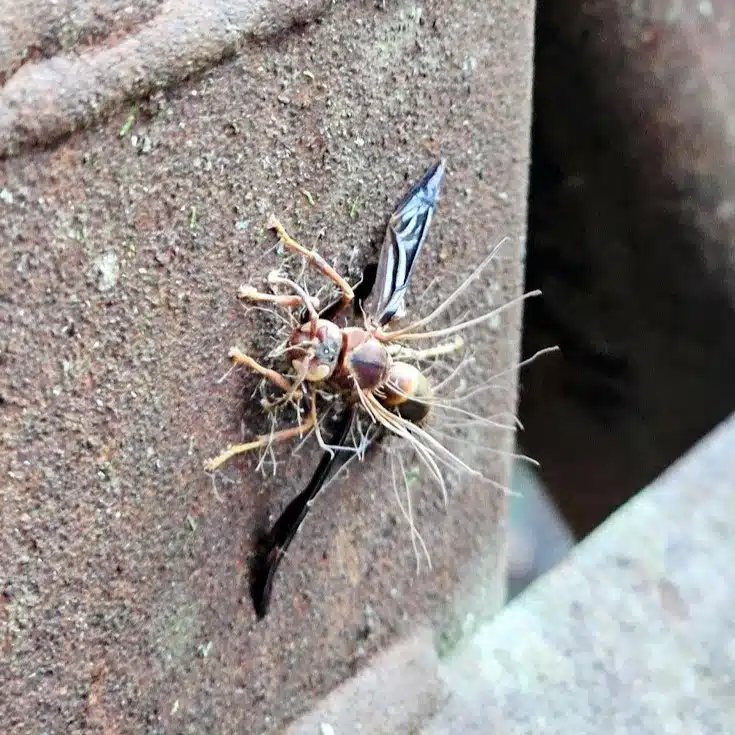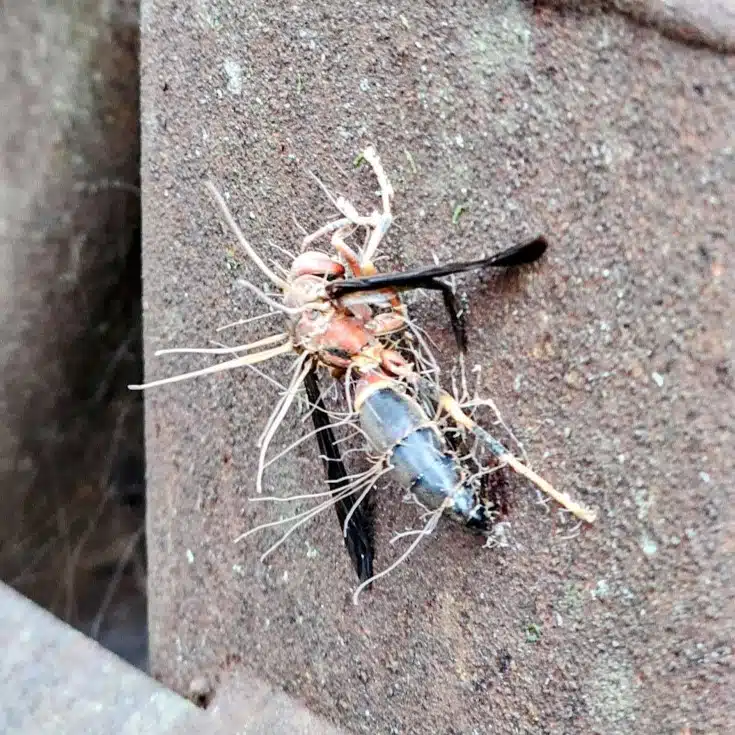Finding the motionless, rigid body of an insect covered with odd spiky protrusions is certain to get anyone’s attention. My friend Shawn Harris had a typical reaction when he asked me about his recent observation – “What the Frankenstein is this!?! My response – “Why, that is just your typical Zombie Wasp. Cool!”
Another friend, Lynn McCoy also found a zombie wasp about a decade ago and together we learned about how parasitic fungi turn insects into the walking dead. In both cases, hapless wasps were the victims, found attached high up on a surface above the ground (a concrete wall of a bridge or the trunk of a tree) that facilitates the dispersal of the tiny spores that the fungus produces, that drift away to infect more victims.
As it turns out, wasps are one of many insects that are infected by hundreds of species of this diverse group of fungi. These fungi are known as entomopathogenic, meaning that they grow inside of insects, ultimately killing their hosts. Near death, the hapless insect seeks a high point in its habitat where it secures itself to a sturdy surface (a death bite on a leaf for ants).
The last act of the fungus is the production of a slender, club-shaped, spore-bearing structure called a stromata that grows out of the body (in addition to numerous fungal filaments). This relationship between fungi and insects is quite old, documented by an ant captured in amber, with a stromata dating to 48 million years ago.
In Shawn’s case, the wasp was a Ringed Paper Wasp (Polistes annualaris). This species builds large, open paper nests in sheltered locations, like under large leaves, the eves of houses, or the underside of a bridge. The wasp and other insects pick up spores while searching for food. Spores grow through the exoskeleton and quickly spread throughout the body.

For gardeners, the sight of rows of tiny white cocoons arranged across the back of a lifeless Tomato Hornworm often elicits a shout of “serves you right!” They are the pupae of Braconid wasps, that spent their days devouring the living, zombie-like caterpillar, until they were all ready to exit to pupate. It is a scary world out there!
But there is something a bit different about the sight of a lifeless wasp or ant, covered with a wild arrangement of fine projections, seemingly frozen in place. That certainly caught the attention of my friends Shawn and Lynn, and for you as well, if you are ever so lucky to see one.
For Shawn, he took his observation to the next level, posting it on iNaturalist and connecting to a researcher on this group of fungi. The collected specimen will be used to culture the fungus for confirmation and study. Citizen Science at its best.
Hope to see you in our great outdoors!
Photos courtesy of Shawn Harris




